#Anonymously Autonomous Legacy Challenge
Explore tagged Tumblr posts
Text

Anonymously Autonomous: an Autonomy Based Legacy Challenge
For The Sims 2, The Sims 3, and The Sims 4
Have you ever played an ISBI (I'm Surrounded by Idiots) legacy, or an asylum challenge? Was it something you enjoyed, but felt a little ick about the name, and the premise being that the sims you don't control are "insane," "crazy," "erratic," or just in some way just stupid? Well, you're not alone! The autonomy in these games isn't great, but can make for some really chaotic situations that you'd never get if you controlled every single sim most of the time, so it's fun to occasionally play a game where your sims are allowed to just be their little chaotic selves. And I want to help facilitate the chaos because maybe I'm a little bit of a Watcher of Mischief myself. If you're interested, keep reading!
Basic Concept
If you know the ISBI and Asylum challenges, you know the main premise: you can only control one sim in your household. In the ISBI Legacy, your founder will eventually "pass the torch" on to their heir, who will become the next sim you can control, and you will no longer be able to control your previous sim. It's very simple. There are other rules, and some versions even include the addition of points, but that's the basic idea.
For AAL (Anonymously Autonomous Legacy), at the bare bones, it's the same exact concept: one single sim you can control. But I decided to do something a little different with this, as well, because I didn't want this to be just a renaming of the ISBI. I want it to be its own thing. And what that thing is is:
Randomization.
The sim you can control will not necessarily be your founder or heir at all times. When you only control one sim, it will always be that sim you control, but once you have multiple sims in your household, after a set period of time you have to Spin a Wheel with all of your household's eligible sims on it to pick what sim you will control during the next set period of time. Sometimes, you will get the same sim multiple times in a row. Sometimes you might never even get to control your heir. It will all depend on the wheel (or dice roller, or number randomizer, whatever you wish).
Interested? Good!
General Rules (for Sims 2, 3, and 4)
Create a YA sim of your choice. If you are playing TS2, you may start either as a YA in university, or you may start as an adult to start their life right away. They can have any personality, likes/dislikes, turn ons/offs, whatever you want.
If you want to start off with randomization from the very beginning, give them a spouse, and spin the wheel to decide who you play as from the beginning.
Use whatever age span you want to for this. However, short might make this even more difficult that it already will be, so only use short if you want an extra challenge.
You may not use money cheats.
Move into a lot using whatever money your family has. You may not give them more money to build them a nice house.
Optional: Move them into the biggest lot in the game (whichever iteration you're playing), and do some lawn living. If they still have a lot of money, reduce their money in a way you see fit - remove it through cheats, or purchase a really expensive item that serves no practical purpose.
Next generation begins when the heir becomes a YA.
Non-heir children may stay in the family home however long you want.
Autonomy Randomization Rules
Once you have more than one sim in your household, you must decide on a specific timeframe in which to randomize who you will be allowed to control and how long you can control them.
An example of what I mean by this is if you have four sims in your household. Let's call them Matthew, Frankie, Shawn, and Sky. Matthew is the founder, Frankie his wife, Shawn a child, and Sky a toddler. You input their names in the wheel, and spin it. The wheel lands on Shawn's name, so for that entire week, he is the only one you are allowed to play.
When you have a sim chosen to be the only one you can control, that is the only sim you may select. You may not select other sims to check their inventory, to check their needs, etc. Their needs and everything are a mystery to you. If they genuinely seem to be stuck, you may reset them however your particular iteration allows you to do so.
You may use your own timeframe for selecting a random sim, but I have come up with my own in case you want to use one of mine.
Weekly Randomization: On Sunday at 8 am, spin the wheel. From that moment until the next Sunday at 8 am, you will control only that sim.
Seasonal Randomization: This is similar to the previous one, but if you play TS4 and play with 14 day or 28 day seasons or have some kind of mod or cheats to modify the length of your seasons. On the first day of the season at 8 am, spin the wheel. From that moment until the first day of the next season, you will control only that sim.
Yearly Randomization: If you want more time with a single sim, this one is for you. On the first day of Spring at 8 am, spin the wheel. From that moment through all of Spring, Summer, Autumn, and Winter, you will control only that sim. On the first day of the next Spring at 8 am, you will spin the wheel again.
Age Span Randomization: The next time your current sim ages up, spin the wheel. So if your founder starts as a YA, spin the wheel when they age up to adult. If the next sim is a child, you play them until they age up to teen, and so forth.
No Randomization: This is an option. If you only want to control your torch holders, you don't have to randomize who you control at all, you can just control your founder then heirs, as long as you only ever control one sim at a time.
Random Randomization: This one would be rather difficult to keep track of, but if you want to, you can use either a number randomizer, or a dicer roller, or some way, to pick how many days you will control your current sim. When you first start controlling a sim, you will roll to find out how many days you may control that sim. Once you move onto the next sim, roll once again to find out how long you will control that sim.
This is all of the timeframes I can come up with right now, but if you have any ideas feel free to message them to me!
Another rule about the randomization is that you may roll the same sim multiple times in a row. You may not remove your current sim from the wheel - whatever sim you get is the one you play.
The sim you control doesn't need to be related to your family. If they are a controllable sim in your household, you must put them on the wheel. If you move in your best friend? You may end up controlling them more often than your own sim.
Optional: If you are going to be posting your legacy on Simblr, or somewhere else, and want to really follow the "anonymous" part of this challenge, keep the sim you are controlling a secret from your viewers! See if they can guess which sim is being controlled, maybe have a poll every time before the next switch just for fun.
General and Iteration-Specific Rules
The first thing I'm going to talk about is what sims are eligible to be put on the wheel, depending on which game you are playing.
The Sims 2: The sims eligible for being the controllable sim are as follows: toddlers, children, teens, young adults (if you send them to university), adults, and elders. All occults/supernatural beings are also eligible, if they are in your household. If you use cheats to control babies or pets, you may also add them to the wheel.
The Sims 3: The sims eligible for being the controllable sim are as follows: babies, toddlers, children, teens, young adults, adults, elders, cats, dogs, and horses. All occults/supernatural beings are also eligible, if they are in your household.
The Sims 4: The sims eligible for being the controllable sim are as follows: infants, toddlers, children, teens, young adults, adults, and elders. All occults/supernatural beings are also eligible, if they are in your household. Also, if you use the mod that allows you to play pets, you may add them to the wheel as well.
You may play however you would normally play, except that you are only allowed to play one sim at a time.
Mods and CC are allowed. You may even use mods that improve autonomy if you so wish.
For any of the games, you may set things up to make life easier for you. For example, I suggest using the baby monitor in TS3 if you end up having to play as a baby - that way, you can use it to call attention to yourself if you are in need. For TS4, I suggest using MCCC to make more things autonomous, like gardening and repairing items. Things like that.
When controlling a sim, you may use their reward points to purchase things. Even if they are rewards that will help you greatly, nothing is off limits. Use whatever advantage you are given.
Nothing in the build/buy modes are off limits either. If you want sim death, feel free to build the horrors. If you want to keep as far away from death as you want, you don't even need an oven. It's up to your discretion.
Also, how do you choose an heir? You can choose an heir any way you choose. Whether you choose the one you like the most, have an heir poll, or use one of the Succession Laws from the official legacy challenge, any way you prefer is fine.
What is the Goal?
Your goal is to get to the 10th generation, and will end when the 10th generation's youngest child ages up to YA. You may play further than this if you please, but that is the main goal.
However, this is not as simple as you might thing, and that is why it is your only required goal.
Because you will (probably) be randomizing which sim you can control, it's not always going to easy to keep your heirs alive, or even find your heir a spouse/significant other to have children with. After all, if you can't control the heir, how can you find them someone to love?
You will have to use whatever sim you are allowed to play to your advantage. If you can't play your heir, use the sim you can play to bring eligible sims to the household to meet your heir.
Another reason that the goal is simple is because sims are not the brightest bulbs in the box, or the sharpest tool in the shed (I had to say it). Some of your unplayable sims might very well die to something silly, like eating too many jelly beans (TS3) or starving to death. Some babies, infants, toddlers, or children may be taken away by social services. Some pets might be taken away as well.
Optional: If you want a little extra challenge, you can add the generational goal that you have to try to complete your heir's LTW/aspiration before they die.
"What is the fail condition for this challenge?" You may be asking. There is exactly one fail condition: every sim related to your family in the household dies/is taken away. So, realistically, this challenge is very difficult to fail. If you only have one related sim left in the household but there are relatives out in the world and you want some insurance, feel free to bring the family back into the home. Whatever you can do to not fail? Do it.
And that's all I have for now! I haven't put together points or anything, or a score card, because I know people don't really play challenges for points anymore. But, if enough people want to play for points, I will add a scoresheet/scoring section.
If you have any questions, please message them to me or comment on this post, and I will answer your questions to the best of my ability!
If you decide to play this challenge, please tag it with #SimsAALC so that I can see it!
@ts4challengehub
#ts2#the sims 2#ts3#the sims 3#ts4#the sims 4#sims 2 legacy challenge#sims 3 legacy challenge#sims 4 legacy challenge#sims legacy challenge#legacy challenge rules#SimsAALC#Anonymously Autonomous Legacy Challenge#ISBI challenge#asylum challenge#sims challenge#sims challenges#challenge rules
179 notes
·
View notes
Text
💼 gameplay challenges (A – H)
⤷ browse all by tag
#
120 Years of U.S. History Legacy
2 Choices Legacy
7 Deadly Sins
80's Classics Legacy Challenge
A
Adopt-a-Sim Challenge
Aesthetic™ Legacy Challenge
Aesthetics Challenge
Alternate Universe Storyteller Challenge
And So It Begins Challenge
Animal Crossing Legacy
Anonymously Autonomous Challenge
Another Beeping Legacy
Assassin Challenge
Astrology Legacy
Autumn Time Legacy
Avatar Legacy Challenge
Awesomesauce Legacy
B
Barbie Legacy
Baldur's Gate 3 Legacy
Beginner's Drama Challenge
Berry Pastel Rainbowcy
Beautiful Flowers Legacy
Birds of a Feather Legacy
Boba Tea Legacy Challenge
Book Genre Legacy Challenge
Bored of Everything Legacy
Bustin' Out Challenge
But Daddy I Love Him Legacy
C
Celebacy
Charmed Legacy
Checklist Challenge
Chromatic Legacy Challenge
Coin Flip Legacy
Collection Legacy
Collector's Challenge
Colors of Nature Legacy
Colour Legacy
Crybaby Whims
Crystal Legacy Challenge
D
Dark Victorian Legacy
Days of the Week Challenge
Differences in the Family Tree
Disney Movie Legacy
Disney Princess Challenge
Disney Princess Legacy
Disney Villain Challenge
Divine Feminine Challenge
E
Emotional Rollercoaster Legacy
Enduring Roots Legacy
Eras: The Legacy Challenge
Ever After Legacy Challenge
Everything But Normal Legacy
Expand Your Expansions Challenge
Explorer Legacy Challenge
F
F.R.I.EN.D.S. Legacy Challenge
Family Dynamics Challenge
Family is Everything Challenge
Family Jewels Legacy Challenge
Family Values Legacy
Fandom Legacy Challenge
Fantastical Whims Legacy
Fantasy Challenge
Fatal Flaws Legacy
Feline Legacy Challenge
Flower Garden Legacy
Follow the Yellow Brick Road
For Rent: Property Management Challenge
Forgotten Realms Legacy
Fruity Legacy Challenge
G
Gaming Legacy
Garden: A Legacy Challenge
Get a Life Challenge
Globetrotter Challenge
Great Simlish Cook-Off
Greek Gods Legacy Challenge(s)
Groovy Legacy Challenge
Growing Dynamics Legacy
Growing Up Legacy Challenge
H
Halloween Legacy
Harry's House Legacy
Heart Signal Challenge
Herbs and Spices Legacy Challenge
Holiday Legacy
Home Sweet Home Legacy
How a Legacy Blooms Challenge
Human Enough Challenge
183 notes
·
View notes
Text
PHOTOGRAPHY AND THE CONSTRUCTION OF THE POST-TRUTH ENVIRONMENT.
“Truth may be stranger than fiction, but many of the camera’s statements are stranger than truth itself… after countless processes of reproduction and re-reproduction [the photograph] has become an autonomous entity on its own [and] functions almost as a symbol, an image, a work of art in its own right”
Extract from Reyner Banham’s essay ‘Parallel of Life and Art’, Architectural Review (1953)
If one rhetoric has been exhausted above all others during the past twelve months, it is that we now live in a post-truth world. Despite unanimous agreement that this no sort of accomplishment, given their sudden emergence and subsequent pervasiveness in mainstream media, post-truth narratives have often tailed into sensationalism; implying the immediate abandonment of all transparency and certainty, within the duration of a ballot count.
Nonetheless, for many artists, probing the nature of truth in society is nothing new. From Reyner Banham’s seminal review of Parallel of Life of Art (1953) [i], via John Berger’s Ways of Seeing (1972) [ii], and as recently as Wolfgang Tillmans’ Truth Study Centre (2005) [iii], critical investigations have long emphasized visual media’s role in the construction of preconceived principles and judgments.
At a time when a resurging appreciation of brutalist aesthetics has triggered enquires into the writing and rewriting of the movement’s history, it is no coincidence that the presence of Banham’s critical spirit could be felt across multiple major exhibitions of the first post-truth summer. Engaging particularly with the relationship between visual reproduction and symbolism, Wolfgang Tillmans’ solo exhibition at the Tate Modern, David Campany’s A Handful of Dust at the Whitechapel Gallery, and Akram Zaatari’s Against Photography: An Annotated History of the Arab Image Foundation at the MACBA, all reassess the dualism of art and reality to reveal how the photograph - more than a mere documentation of the latter - can function as a work of art in its own right. Coincidentally, with the infamous Brexit Bus having since become an unlikely metaphor for a referendum of unfounded claims and inevitable compromise, the exhibitions pay particular attention to the photographic production and reproduction of vehicles. This is a part of a wider common focus on material objects and the relationships implicated by their visual representation. As suggested by Eyal Weizman’s Forensic Architecture, these connections are made problematic when images, whether they are cultural symbols or judicial artifacts, become politicized; a process for which the artist’s accountability must also be evaluated.
Having dual German and British citizenship, Wolfgang Tillmans’ engagement with the EU referendum reflected at once his personal anchoring to the matter and a consciousness towards the political responsibilities of the artist. Nonetheless, whilst the posters and prints he designed for the Remain movement feature in his latest solo exhibition, Tillmans’ interest in the political rhetoric now associated with Brexit’s chaotic upheaval - of unfounded claims and inevitable compromise - predates the recent referendum. Coming to prevalence at the start of the 21st century, the artist’s emergence coincided with the politics of the “Unknown-unknown”; a phrase coined in 2002 by Secretary of Defense Donald Rumsfeld to describe the supposed threat of nuclear arms in the Middle East and justify the USA’s subsequent invasion of Iraq in 2002. Such oblivious ignorance towards the political prerequisite of certainty, and the increasingly ever-warping standards of truth and justice, would influence Tillmans’ 2005 book and exhibition Truth Study Centre. Further inspired by the blanket denial of HIV and AIDS by certain orthodox organizations in Africa, Tillmans is conscious of the way that media, in cohesion with other political institutions, seeks to deliver truth, and the socio-political implications of making such a claim. To exhibit the photographic work of Truth Study Centre, Tillmans interweaved his intensely-personal images with various photocopied newsprints and press-clippings reacting to specific events. Across the thirteen tables Tillmans presents, severe disjuncture emerges. The result is a set of conflicting, incongruous narratives, all claiming to represent the truth, whilst in reality undermining photography’s credibility as a documentary tool, disrupting the pretense of journalistic objectivity, and suggesting the possibility of interplay between the two.
With the Tate exhibition also encompassing his previous works Fruit Logistica (2012) [iv] and The Cars (2015) [v], the audience is urged to reassess its understanding of material objects and recognize how images can multiply and manipulate their meaning. Whilst material goods are so often understood – if at all - as fixed sign of everyday life, the exhibition stresses the myriad of social and cultural interactions that define the relationship between commercial photography and materiality, both in terms of the advertising of capitalist goods, and the physical reproduction of images. With the development of high-resolution printing and scanning devices enabling his growth as an artist in the past two decades, Tillmans has long utilized his natural attunement to visual reproductive technologies to explore their capacity to manipulate reality. Aligning photographs taken at a fruit exposition in Berlin with parallel images from a screen-printing fair in Barcelona, Fruit Logistica blurs the boundary between the actual and the technologically reproduced; satisfying Banham’s assertion, and materializing the image of the organic object into an autonomous entity. Beyond an ode to his own medium, the 2012 work served as a wary assessment of the capabilities of commercially reproduced imagery as a recreator and proliferator of modern, street-level assumptions.
This is further explored in The Cars, which unravels the excess materialities of the automobile. Intrigued by the photographer’s tendency to edit or remove any signs of vehicles from architectural images as if they are obstructions, Tillmans presents the vehicle as an inescapable and productive feature of the urban landscape. Aligning photographs of passing cars, as would be immediately perceived by the artist, with both static and commercially-derived images, the work reveals the vehicle’s multifaceted social and cultural identities. Whilst the first form of images present the car as an object of physical urban movement – the moving subjects often blurred, unidentifiable or in an anonymous mass – more precise assessments of car design reveal an underside of calculated inequalities. The presentation of luxury cars as polished objects of desire not only conflicts with the experience of vehicles for the vast majority of the world’s population, but reinforces the car as a vehicle of not only physical, but also social and economic mobility. Right down to Tillmans’ (perhaps tongue-in-cheek) observation of the increasingly menacing appearance of headlights, Cars is an intriguing insight into the grander hegemonic forces for which the automobile is a symbolistic vehicle.
By defetishizing the car, Wolfgang Tillmans engages with what the philosopher Slavoj Zizek describes as the “unknown-knowns” of society; the disavowed beliefs, suppositions and obscene practices we pretend to not know about even though they form the background of our public values [vi]. Whilst Donald Rumsfeld justified the Iraqi invasion as self-defense against a speculative and generalized threat, Zizek’s interpretation - reacting to the Abu Ghraib scandal, and the obscenely-celebratory images through which it was delivered to the Western world – reframes this fear as an internalized and constructed specter of the Islamic world. Seeking a link between cultural assumptions and the means via which Orientalist narratives are produced, Akram Zaatari’s Against Photography: An Annotated History of the Arab Image Foundation [vii] uses images of the vehicle in twentieth century Egypt to simultaneously trace the lineages of the country’s modernization, and underline the problematic nature of documentary archives. Stemming from his work with the Arab Image Foundation, a photographic collection and preservation archive which currently holds a record of over 30,000 images from the Middle East and North Africa, Zaatari’s project faces both the internal challenge of a culture in which photography is not as openly embraced, and the external difficulties presented by the selectiveness of Orientalist representations of Arabic world. Images which appear to symbolise modernisation, like that of an Egyptian man posing next to a Western automobile, are concealers of hidden privileges such as having the status and wealth to sit for a photographer in the early twentieth century. In the meantime, lending to the increasing popularity of the automobile, Syrian nomadic culture disappears without photographic trace. Such inequalities of privilege and preference manifest themselves in Zaatari’s wealth of Egyptian tourist photos; many of which have been deliberately underexposed to ensure that local workers are obscured to nothing more than barely visible shadows, whilst simultaneously emphasizing the pale skin of the Western travelers posing camel-back. Having remapped the landscape in line with notions of territorial identity, themselves a by-product of the borders fixed by European colonial powers at the beginning of the twentieth century, Zaatari argues that the automated vehicle has replicated geographical colonialist legacies. Thus, with the camel repressed as a nomadic tradition, yet all too prevalent in these type of images, its reproduction in Orientalist contexts marks the divergence between the reality of Arabic modernization and its photographic representation.
It is now evident that attempting to construct a historic order or lineage using only photographic sources can have severe limitations and implications. Nonetheless, having seen its capacity to reveal modern intimations, both intentionally and accidentally, it is equally problematic to denounce photography as a documentary medium. As Reyner Banham asserted, across the lifetime of a photograph – caught in the balance between instantaneousness and timelessness – its meaning can be radically altered and exploited. Therefore, any artist willing to embrace photography as a documentary tool must possess a heightened awareness of such timings, particularly in a political context.
To navigate this issue, curators whose work comprises of building histories via the photographic medium must acknowledge that their work is merely speculative, particularly if they assume a privileged position.
One artist to do this is David Campany, who embraces the flexibility of the photograph in his book A Handful of Dust (2015) [viii], subsequently presented at the Whitechapel Gallery. An imaginative and experimental realignment of culture and photography in the twentieth century, Campany probes the multiple facets of an image made by Man Ray and Duchamp in 1922, now commonly referred to as Dust Breeding, to hypothesize the development of the medium’s chemical, artistic and documental nature. Campany’s work underlines the ease with which a determined narrative can be curated through images, but simultaneously reiterates the danger this carries. Despite being wholly apolitical, A Handful of Dust’s narrative is neither accidental or coincidental, and rather the work of an artist whose curation process involves highly-privileged access to archival and documental sources. Therefore, whilst they occupy different spheres, A Handful of Dust shares many of the privileges exercised by the very powers that Akram Zaatari attempts to subvert.
Thus, if the image is made problematic by a process of reproduction which emphasizes one narrative over the other, then how does a medium so vulnerable to misinterpretation, yet with so many inextricable ties to truth, continue its documental responsibilities into the future?
Advancing on the notions of Gerry Badger’s CCCB exhibition Propaganda Books Versus Protest Books [ix], which tests the flexibility of photographic interpretation in the most intense political situations, Eyal Weizman’s MACBA installation Forensic Architecture: Towards an Investigative Aesthetics��[x] works against the manipulating nature of war images to propose an alternative process of investigative photography. As outlined in the project’s de-facto manifesto, Forensic Architecture: Violence at the Threshold of Detectability (2017) [xi], Weisman’s demand for more material and aesthetic engagement with the implications of state violence and armed conflict marks an evolution of the constructionist work of his contemporaries. Bringing such ideals into the legal realm, the Goldsmith’s-based research firm provides a blueprint for the future of photographic documentation which acknowledges the medium’s role in constructing inequalities, only to stress its parallel capacity to rework them. When the presence of an image is multiplicitous - its manipulations at any one time political, juridical, institutional and informal - any attempt to counter-act such processes must be likewise. Therefore, rather than abandon photography as a documentary medium, and in turn surrendering its power, Weizman engages with the functions and vulnerabilities of the image, to re-formulate it is a forensic medium.
The decision to initiate Forensic Architecture, claims Weizman, was inspired by the ground-breaking investigative work of Richard Helmer. With a team of fellow pathologists, Helmer orchestrated the positive identification of Josef Mengele in Sao Paolo, Brazil, following the exhumation of the body of the Nazi war criminal in 1979. Unlike traditional forensic analyses, the Mengele identification process collated and combined, for the first time in an instance of such importance, various forms of photographic imagery to develop a bank of visual evidence sufficient to provide a conclusive identification. With photographic stills of Mengele being the only available source from which to identify a likeliness between the subject and the exhumated skeleton, Helmer moved beyond the superficial capacity of the photograph by imposing static images of the criminal’s head over video images of the found skull. When the result was deemed sufficient evidence to positively identify Mengele, Helmer had initiated a new wave of technological forensics.
Taking issue with the tendency of traditional forms of conflict documentation to drive parochial narratives, Forensic Architecture builds upon Helmer’s legacy in its demand for innovative sources of visual evidence used in response to issues as wide as terrorism, state-violence, and climate change. The need to drive for innovation, however, is also a politically enforced one. Investigations carried out by Forensic Architecture into civilian deaths and drone strikes in North Warizastan have faced obstacles in the form of the state’s control of satellite imagery. Unmanned aerial vehicles have re-configured the geographies of conflict, making anybody visible – thus, vulnerable – at any moment, no matter their location. Simultaneously, this form of panoptic surveillance has birthed a new wave of image conflict. It is perhaps no coincidence that when UAVs surface on the news, it is too often to report cases of friendly-fire or the destruction of unintended targets; over drone footage of scrolling, dark foothills, and human settlements reduced to silhouettes of white-heat. When drone strikes can leave an entrance hole as small as 4cm in the roof of a building, for the Forensic Architecture team, tracing the genealogies of an attack can be an incredibly difficult task. To make secondary visual evidence more inaccessible, censorship of US military satellite imagery renders any suspected victims virtually invisible, with the resolution of images degraded, supposedly on the grounds of privacy and security, to the extent that a male body is masked within the square of a single pixel. As a result, when investigating civilian deaths, Weizman and his team are forced to undergo a process of visual reconstruction, using a combination of primary visual accounts of the drone strikes, and sources of secondary information which hasn’t been rendered unusable by state control. Investigating a case in Miranshah, Northern Warizastan, video footage of the site’s wreckage, which had been smuggled out of the zone and aired on public TV, was meticulously studied to build a spatial visualisation of the attack. Using a collage technique from single frames, Weizman and his team were able to reconstruct the building, reveal the scale of damage, and estimate casualty numbers. Once a location has been identified, this can then be verified by publicly available resources, even those as rudimentary as Google Maps, and subsequently tied back to known drone attacks.
Another area that Forensic Architecture has been active is in Palestine, where it has sought to hold IDF forces accountable for crimes when existing evidence falls short. In the case of Bassem Abu Rahma, who was struck and subsequently killed by a tear-gas canister during protests in Bil’in, West Bank in 2009, Weizman and his team of investigators used available primary evidence to create a comprehensive audio-visual spatial analysis of the event, and subsequently challenge the Israeli verdict of accidental death. For Palestinians, the camera is an essential protest tool. Beyond its empowering potential for publicity, it is also too often the only piece of evidence capable of proving excessive-force and out-right violence against demonstrators.
Further considering the IDF’s notoriety for targeting and destroying Palestinian cameras, video-recorders are therefore indispensable for protestors, and Weizman was fortunate enough to access an abundance of visual footage at the scene of Abu Rahma’s death. Identifying the firing of the munition by a soundbite to begin with, the forensic architects synced the footage of three on-site recordings, and subsequently used satellite imagery to trace the movement of the corresponding cameramen on a map. This enabled Weizman to locate the victim, the trajectory of the munition, and a wired-fence, which according to Israeli military caused a ricochet that forced the direction of the canister towards Abu Rahma. It was a single still-frame of David Reeb’s footage, fatally marked at 5:44:07, which pinpointed the final contact, and where all possible trajectories were analysed. Weizman devised a threshold to determine whether the shot was fired directly at Abu Rahma, or if a supposed ricochet was plausible. Calculating a maximum angle at which the shot could have realistically caught the wire fence by chance, and thus be deemed an accident, the investigation concluded that the canister had been deliberately aimed towards the victim. Weizman’s evidence caught the attention of various human rights organizations and in July 2010, the Israeli military backtracked on their previous statements by re-opening a criminal investigation into the case. After an initial failure to prosecute the soldier guilty of killing Abu Rahma, the victim’s party have continued to seek justice for his death, and the evidence collated by Weizman and the Forensic Architecture team will remain invaluable in doing so. Nonetheless, with Israeli government officials maintaining that the evidence is insufficient, despite failing to provide any sort of alternative, it is clear that Forensic Architecture still faces some substantial obstacles.
If there is any merit to be found in the recent political climate, it may be that the growth of discourse surrounding political truth has reinvigorated discussions regarding the instability of photography as a documentary medium. Building on the legacy of Banham and Berger, Wolfgang Tillmans’ work has helped to reassert the image’s potential as a cultural symbol, with the capacity to shape and re-shape the assumptions that we consider truth. Additionally, Akram Zaatari’s anti-orientalist engagements have gone one step further to demystify the nature of subconscious assumptions, framing them as the hegemonic constructions of an external, dominant force. With selective photographic reproduction and the privileging of specific discourses the means by which prejudiced histories emerge, these artists have found success in subverting these legacies of inequality.
Nonetheless, as much as the re-reproduction of images makes for an artistic project fit for the post-truth era, it is also evident that such works are not themselves entirely unproblematic, nor freed from the implications of the discourses they attempt to subvert. Rather, to collate and manipulate images in a constructive manner, artists must exercise – to some degree - the same privilege they work against; characterized by a power to influence through visual imagery, and an access to archival resources sufficient to do so. Furthermore, being retrospective by nature, such works do not face to the same extent an active fight against the physical, infrastructural, and legal controls which orchestrate the construction of inequalities. Whilst attempts to re-construct documentary lineages have moved beyond an understanding of the possession, production, and reproduction of images as a purely technical process, we are only now beginning to understand how corresponding political engagements work on the ground level.
For Eyal Weizman, the fight to deliver truth, though mediated via visual imagery, is an explicitly legal one. Forensic Architecture is neither a journalistic institution nor a human rights group, but in its loyalty to the photographic medium it must assume the responsibilities and implications of both. The result is a premise for the future of documentary photography which challenges the traditional manifestations of the medium’s vulnerability whilst fighting the physical, violently juridical processes which constitute them.
Therefore, although photography’s role in the privileging of discourses and the formulation of cultural symbols has long been perceived as a gradual, inevitable process, at the time of the demystification of post-truth politics, recognizing photography’s active participation in current inequalities and uncertainties may likewise provide a diagnostic blueprint for its future as a documentary medium.
References and Readings:
[i] Banham, R. (1953) Parallel of Life and Art. Architectural Review. [ii] Berger, J. (1972) Ways of seeing. London: BBC Enterprises [iii] Tillmans, W. (2005) Truth Study Centre. London: TASCHEN [iv] Tillmans, W. (2012) Fruit Logistica. Köln: Walther König. [v] Tillmans, W. (2015). The Cars. Köln: Walther König. [vi] Zizek, S. (2004). What Rumsfeld Doesn’t Know That He Knows About Abu Ghraib. In These Times. [vii] MACBA (2017). Akram Zaatari Against Photography. An Annotated History of the Arab Image Foundation. http://www.macba.cat/en/exhibition-akram- zaatari/1/exhibitions/expo. (Accesed: 24/09/17) [viii] Campany, D. (2015). A Handful of Dust. Mack: London. [ix] CCCB (2017). Photobook Phenomenon. http://www.cccb.org/en/exhibitions/file/photobook-phenomenon/225004. (Accessed: 24/09/17) [x] Forensic Architecture. (2017). Forensic Architecture. http://www.forensic-architecture.org/.(Accessed: 24/09/17) [xi] Weizman, E. (2017).Forensic Architecture: Violence at the Threshold of Detectability. Massachusetts: Zone Books
#leo#ellio#geography#photography#akram#zaatari#bristol#reyner#banham#wolfgang#tillmans#mack#campany#forensic#architecture#essay#zizek#eyal#weizman
1 note
·
View note
Text
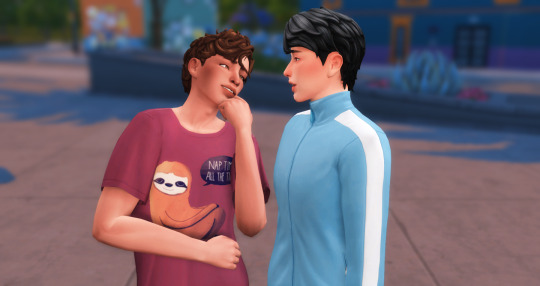
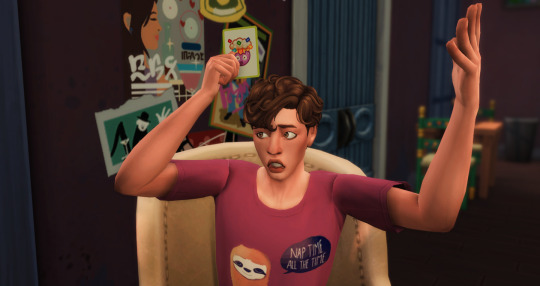
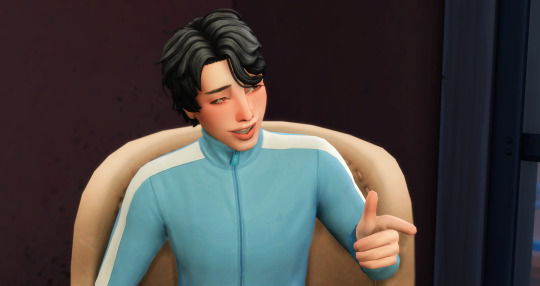

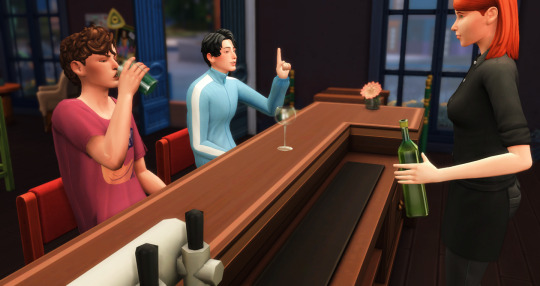

Dean and Astor go on a date to Ciudad Enamorada.
#ts4#the sims 4#sims 4 legacy#anonymously autonomous legacy challenge#simsAALC#AALC gen 1#ixona gen 1#ixona legacy#dean ixona#astor ixona
18 notes
·
View notes
Text


Dean gets promoted, and has to give their husband a kiss to celebrate.
#ts4#the sims 4#sims 4 legacy#anonymously autonomous legacy challenge#simsAALC#AALC gen 1#ixona gen 1#ixona legacy#dean ixona#astor ixona
13 notes
·
View notes
Text
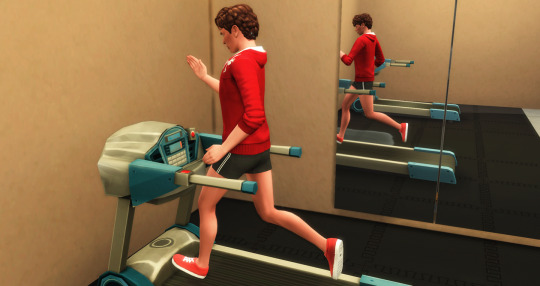

#ts4#the sims 4#sims 4 legacy#anonymously autonomous legacy challenge#simsAALC#AALC gen 1#ixona gen 1#ixona legacy#dean ixona
11 notes
·
View notes
Text
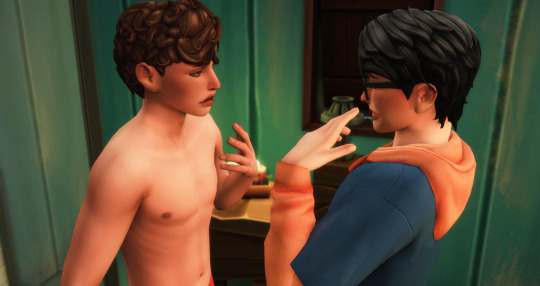

Dean and Astor just being adorable in their outhouse. Yes, they have an outhouse.
#ts4#the sims 4#sims 4 legacy#anonymously autonomous legacy challenge#simsAALC#AALC gen 1#ixona gen 1#ixona legacy#dean ixona#astor ixona
8 notes
·
View notes
Text
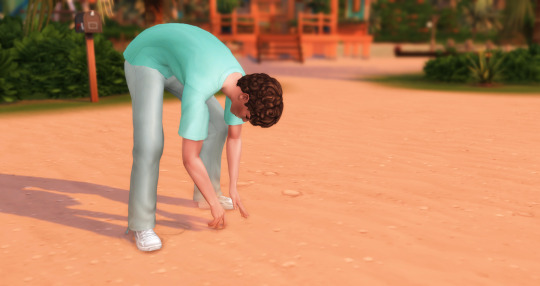
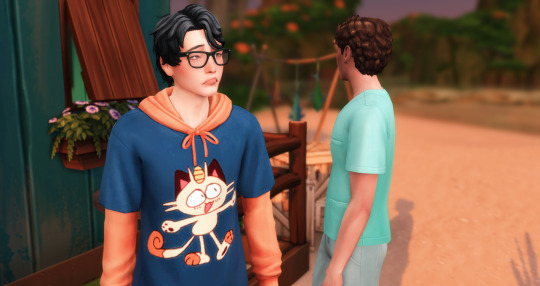

Judging by the look on his face, Astor's first day of work wasn't great, either.
Also yes, Dean grew their hair out. They also now have outfits corresponding to each of their gender expressions.
#ts4#the sims 4#sims 4 legacy#anonymously autonomous legacy challenge#simsAALC#AALC gen 1#ixona gen 1#ixona legacy#dean ixona#astor ixona
10 notes
·
View notes
Text

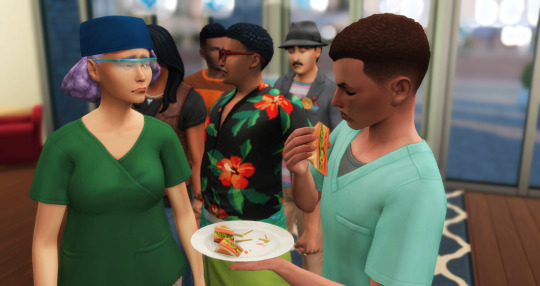

Dean didn't have a... great first day at work.
#ts4#the sims 4#sims 4 legacy#anonymously autonomous legacy challenge#simsAALC#AALC gen 1#dean ixona#ixona gen 1#ixona legacy
7 notes
·
View notes
Text

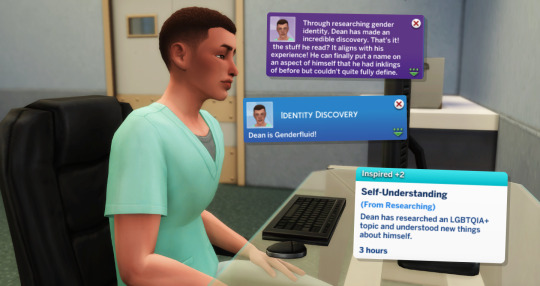

Dean woke up feeling unsatisfied with his gender identity, and so while he was at work, since this is his week for being controlled (oops outright admitting he won the weekly spin), I had him research gender identity... and he discovered he is actually genderfluid! And that they/them fits them much better.
They will shortly be getting an appropriate makeover.
#ts4#the sims 4#sims 4 legacy#anonymously autonomous legacy challenge#simsAALC#AALC gen 1#ixona gen 1#ixona legacy#dean ixona
10 notes
·
View notes
Text



Dean makes dinner for their first night in their brand new save, and Astor... does sit ups.
#ts4#the sims 4#sims 4 legacy#anonymously autonomous legacy challenge#simsAALC#AALC gen 1#ixona gen 1#ixona legacy#astor ixona#dean ixona
7 notes
·
View notes
Text
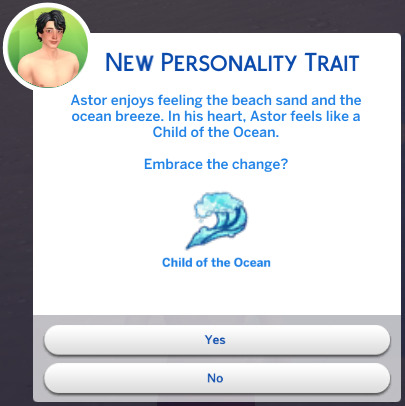


While out sailing, Astor gets himself a new trait. So now we have a child of the islands and a child of the ocean - seems like a fitting couple.
#ts4#the sims 4#sims 4 legacy#anonymously autonomous legacy challenge#simsAALC#AALC gen 1#ixona gen 1#ixona legacy#astor ixona
12 notes
·
View notes
Text


Meanwhile, Dean plays in the waterfall.
#ts4#the sims 4#sims 4 legacy#anonymously autonomous legacy challenge#simsAALC#AALC gen 1#ixona gen 1#ixona legacy#dean ixona
12 notes
·
View notes
Text
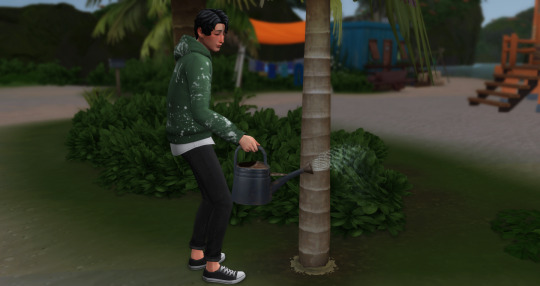
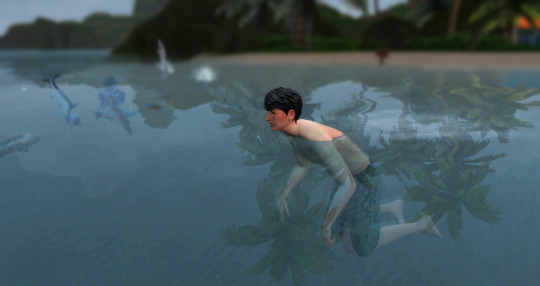


I'm not going to say outright who I'm going to be controlling for the first week, since I want to keep the "anonymous" part of the challenge, but I don't think it's going to be hard to guess.
I say this because I didn't even know there was a boat nearby for Astor to steal, but he swam off and stole it after watering their coconut tree.
#ts4#the sims 4#sims 4 legacy#anonymously autonomous legacy challenge#simsAALC#AALC gen 1#ixona gen 1#ixona legacy#astor ixona
9 notes
·
View notes
Text
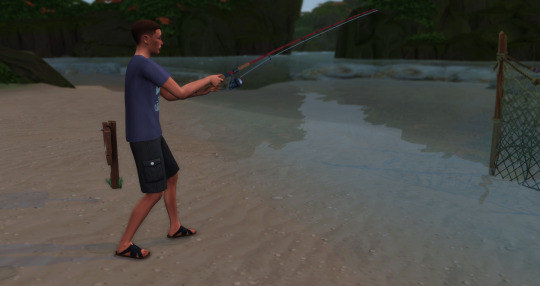

This guy here is our other founder, Dean Ixona, and Astor's husband.
He is child of the islands, gloomy, and good (later discovers that he is also family-oriented, though I missed a screenshot of it). He has the Renaissance Sim aspiration, is pansexual, and working in the doctor career.
#ts4#the sims 4#sims 4 legacy#anonymously autonomous legacy challenge#simsAALC#AALC gen 1#ixona gen 1#ixona legacy#dean ixona
9 notes
·
View notes
Text
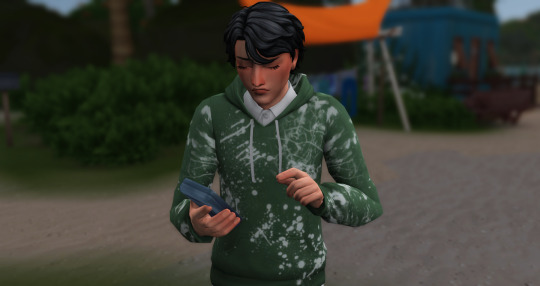

Welcome to my temporarily-replacing-the-Name-Game-legacy-legacy!
Since I invented the AALC, I wanted to be sure to play it myself to make sure it was, you know, playable, and enjoyable. But I was planning to post these pictures after I finished one of my current legacies... until I had 14 sims in one household and got too stressed to play the Name Game for a while.
Anyway, meet one of our founders! This is Astor Ixona - originally Xin, but I've already got a Xin over on @sparepartsbacc so I decided to mash my founders' names together.
He is self assured, romantic, and active. His aspiration is Bodybuilder, he is bisexual, and works in the athletic career.
#ts4#the sims 4#sims 4 legacy#anonymously autonomous legacy challenge#simsAALC#AALC gen 1#ixona gen 1#ixona legacy#astor ixona
8 notes
·
View notes